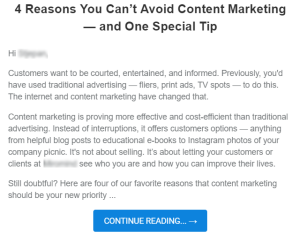 It’s happening again. The winds of change are sweeping across the SEO landscape and this time, they’re leaving behind quite a few ranking factors. HubSpot believes SEO will be unrecognizable within the next five years as new and diversified search behaviors leave marketers no choice but to adapt. Except this time, it won’t just be about strategy tweaks. Some of the changes we’re going to see for SEO will require a complete strategy rewrite.
It’s happening again. The winds of change are sweeping across the SEO landscape and this time, they’re leaving behind quite a few ranking factors. HubSpot believes SEO will be unrecognizable within the next five years as new and diversified search behaviors leave marketers no choice but to adapt. Except this time, it won’t just be about strategy tweaks. Some of the changes we’re going to see for SEO will require a complete strategy rewrite.
The good news? Many changes are just beginning to take shape, and much of the conversation is still largely based on predictions, which means there’s time to get ahead of the curve. Here’s what we know about what has changed, what could change and what will stay the same when it comes to SEO in 2016.
1. Mobile Browsing is Boss
ComScore reported last spring that mobile Internet browsing has officially surpassed desktop browsing by 60 percent. Which means there isn’t much point in distinguishing between mobile and desktop browsing any more. It’s just browsing …
Every website should be optimized for all screen sizes and Google agrees. It already changed its search algorithm last spring to weed out websites that aren’t optimized for mobile. But what’s even more interesting is the Forrester report everyone’s been referencing. According to the research, 85 percent of the time we spend on mobile devices is in app. This could mean serious changes for SEO strategy. Namely, an increase in in-app content and, subsequently, more marketers linking to specific pages within apps instead of website pages.
2. Social is Increasingly Important
Have you noticed a little something different happening when you click to read an article on Facebook? Historically, you’d be routed to the website in which the article originated. But recently, Facebook added a new feature to keep users in-app.
Now the articles remain in-app for your viewing pleasure. Twitter isn’t far behind, either. It plans to follow Facebook’s lead with long-form content in-app. This will definitely impact SEO strategy because social media isn’t necessarily feeding traffic back to your website anymore. That means social signals (likes, shares, comments, mentions) are increasingly more important to your SEO ranking and social connections and influences may also start to play a more substantial role in search results.
Facebook didn’t just stop at long-form content, either. It also added a search feature that, surprisingly, is gaining on Google 1.5 billion searches daily to 3.5 billion. This gives marketers one more reason to consider increasing their focus on social presence.
3. Voice Search and Personal Assistants are Game Changers
A huge driver behind changes in SEO is voice-activated personal assistants, especially now that the technology has become more accurate. Instead of typing keywords, we’re speaking inquiries in our casual language, which means your content strategy must follow suit and take on a more relaxed phraseology.
Voice search also means search can take place anytime, anywhere. Not just when it’s safe and convenient to type on a keyboard. Furthermore, search assistants use your prior search history and context to deliver more accurate results. For example, if you regularly order clothing from a favorite online retailer, and search for sweaters via personal assistants like Siri, Google Now or Cortana, they’ll provide your choice retailer as a top search result.
Finally, voice search puts greater emphasis on local SEO. In many cases, people using voice-activated assistance are busy and need immediate information. Their topic of search frequently involves finding a nearby location, which means local SEO is going to become a greater asset for businesses looking to rank in these queries.
4. Rich Answers are Stealing Thunder
Google is also pushing the limits of search. It started to answer search queries with its Rich Answers feature instead of solely providing a list of top sources for you to choose from.

Since 2014, rich answers have continued to increase both in offering and utilization by searchers.
Rich answers provide responses to questions by way of:
- Feature excerpts (taken by Google from a third-party website)
- Google-generated answers (via public domain or licensed data)
- Charts or tables
- SlideShares
- Maps
- Forms

For marketers, this means audiences don’t always need to sift through search rankings to find what they need. That is, unless they want an in-depth answer to their question.
Getting your content indexed in rich answers should be a goal (albeit ambitious) in 2016. It won’t be easy getting recognized by Google as the top source for information on a topic—but it is possible. And if you get the feature snippet spot, it will boost your website traffic.
How Will SEO Remain the Same?
Feel like the rug’s just been pulled out from under your feet? Take a deep breath. Not everything about SEO is on the fast track to change. Here’s what won’t be changing:
Content is Still King
Content is still as important as ever. But as the market continues to become saturated with content, length isn’t as important as the value of the information.
Google (and its Panda algorithm) is getting better at interpreting meaning. And with social sharing and earned media becoming more impactful, your content needs to be share-worthy if you want it to perform well and bear greater influence on your SEO results. This doesn’t mean going light on content, however. Pages too thin on content do tend to get poorly ranked in search results.
Videos are Still Gaining Traction
The growing popularity of video marketing isn’t a fleeting trend. Search engines have taken a serious liking to them. In fact, video is 50 times more likely to garner organic page ranks via Google than plain text.
This isn’t that much of a surprise, considering Google owns YouTube. But it is important to keep in mind as you assess your SEO strategy that videos rank higher in search results than other content pieces.
User Experience is Still Top Priority
All this talk about search engines makes it easy to forget that the user experience is still top priority. Even Google thinks so. It is paying much more attention to landing page experience these days (especially for the ranking of AdWord ads) and page layout.
UX experts also caution: Understanding your user is more important than understanding Google’s ever-changing algorithms. User experience has the potential to significantly impact SEO via organic sharing and distribution.
The bottom line: To be found is to understand how we’re being searched.
Technology is getting more sophisticated, and as it does, it will inevitably change the way we engage with the world around us. Particularly, how users interact with their devices and the information at their fingertips. As technology and human interaction continue to evolve, so, too, will Google’s algorithms as it attempts to better understand user behavior. And so, too, must our SEO strategies evolve to ensure we are discovering in this rapidly advancing online landscape.
Digital & Social Articles on Business 2 Community(59)







